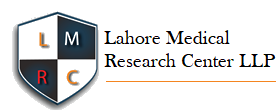Ameliorative Potential of Antioxidants against Hypertension
DOI:
https://doi.org/10.54393/mjz.v1i2.41Abstract
The most significant risk factor for the development of cardiovascular disease is thought to be hypertension. One of the key factors behind the emergence of hypertension, oxidative stress, has attracted attention. Reactive oxygen species (ROS) may play a part in the mechanism underlying hypertension because they are crucial to maintaining the vascular wall's equilibrium. Additionally, mechanical forces that rise with hypertension may contribute to increased ROS generation. Increased intracellular calcium concentration causes ROS-induced vasoconstriction, which contributes to the development of hypertension. Vasomotor tone depends on a precise balance between vasoconstrictor and vasodilator forces that are produced by the interaction of the blood and vascular wall components. Oxidative stress can change any of these forces. These results have sparked interest in antihypertensive treatments that aim to reduce ROS production and/or boost nitric oxide (NO) bioavailability.
A strong water-soluble antioxidant, Vitamin C acts as an enzyme modulator on the arterial wall, increasing endothelial nitric oxide synthase (eNOS) and decreasing NADPH oxidase (NOX). Antioxidant therapy has been proven to improve vascular function and lower blood pressure in both animal models of hypertension and human hypertension [1, 2]. Vascular dilatation may benefit from vitamin C, probably due to its antioxidant effects on NO.
Another important lipid-soluble antioxidant, Vitamin E, has drawn a lot of interest due to its antioxidant properties. A high dietary vitamin E intake is associated with a lower incidence of cardiovascular disease and a growing body of research suggests that vitamin E can modify biological processes without affecting its antioxidant capacity. The existing experimental data demonstrates that vitamin E is capable of dose-dependently controlling the production of superoxide and hydrogen peroxide in the mitochondria which in turn shows anti-hypertensive effects [3].
References
Nishikawa Y, Tatsumi K, Matsuura T, Yamamoto A, Nadamoto T, Urabe K. Effects of vitamin C on high blood pressure induced by salt in spontaneously hypertensive rats. Journal of Nutritional Science and Vitaminology. 2003 Oct; 49(5):301-9. doi: 10.3177/jnsv.49.301
Chen X, Touyz RM, Park JB, Schiffrin EL. Antioxidant effects of vitamins C and E are associated with altered activation of vascular NADPH oxidase and superoxide dismutase in stroke-prone SHR. Hypertension. 2001 Sep; 38(3 Pt 2):606-11. doi: 10.1161/hy09t1.094005
González J, Valls N, Brito R, Rodrigo R. Essential hypertension and oxidative stress: New insights. World Journal of Cardiology. 2014 Jun; 6(6):353-66. doi: 10.4330/wjc.v6.i6.353
Downloads
Published
How to Cite
Issue
Section
License
Copyright (c) 2020 MARKHOR (The Journal of Zoology)

This work is licensed under a Creative Commons Attribution 4.0 International License.
This is an open-access journal and all the published articles / items are distributed under the terms of the Creative Commons Attribution License, which permits unrestricted use, distribution, and reproduction in any medium, provided the original author and source are credited. For comments editor@markhorjournal.com











